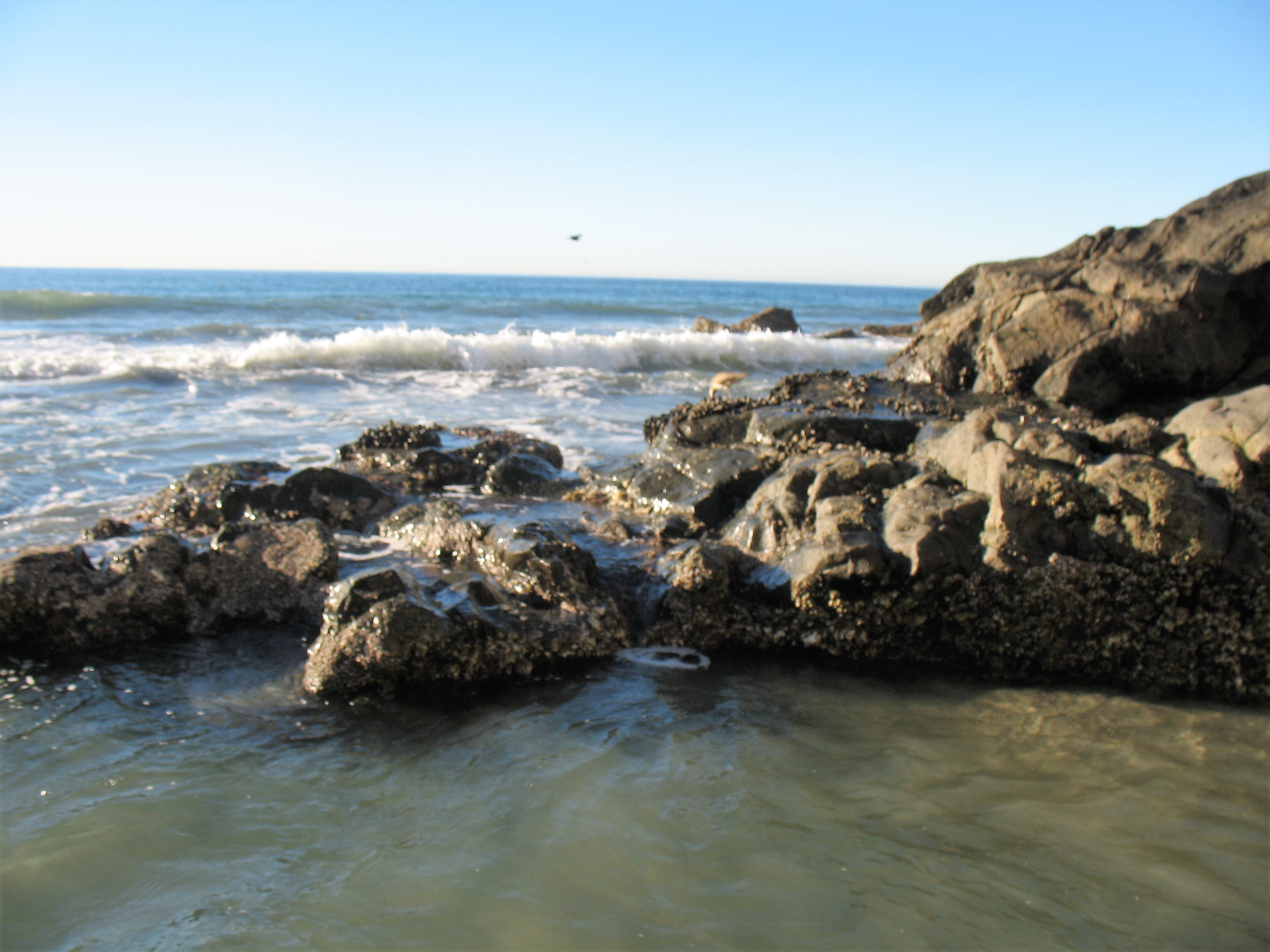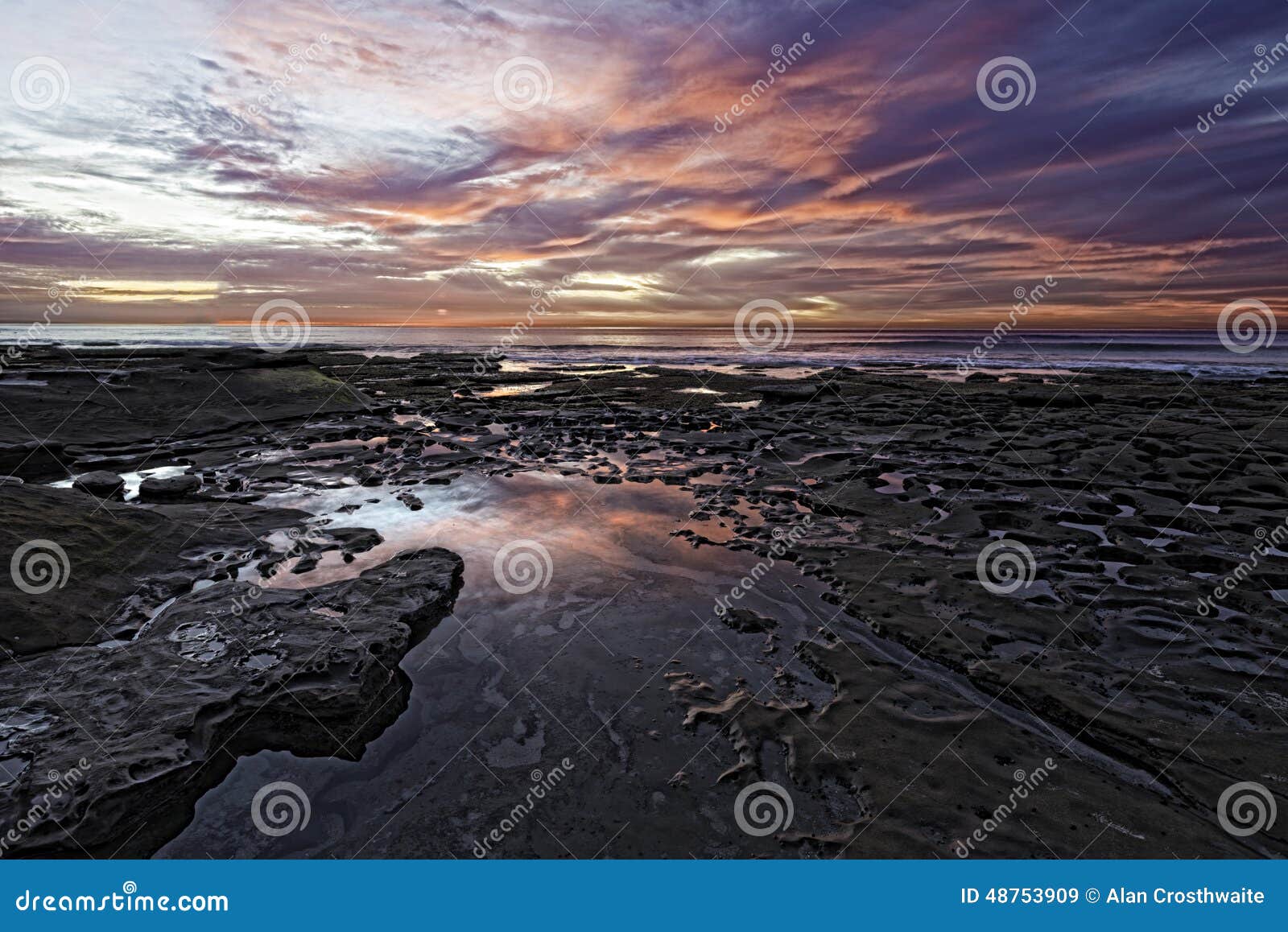

Located near the Ocean Beach Pier at the end of Newport Avenue, you’ll find a small parking lot just north of the pier.

This spot is really good for kids or adults who prefer more stable footing, as the rocks here are relatively flat, and pools are shallow. You’ll find the parking area off just off Tourmaline Street. Just be aware that rocks here can be very slippery due to the algae. However, you may not find many sea urchins, mussels, or other type barnacles here, as these prefer faster water flows. Just north of the surfing area, the boulder-filled sand is host to tube snails, red thatched barnacles, anemones, hermit crabs, and limpets. Renowned as a top San Diego surfing spot, this North Pacific Beach park also sports some amazing tide pools. Guests will have to pay an entry fee to the aquarium to access the tide pool area, but the entire educational experience is well worth it. That led to us later following up with an in-depth guided tide pool adventure on the beach with trained naturalists. Speaking of La Jolla, when we took our grandchildren to the Birch Aquarium, they were totally fascinated with the aquarium’s interactive tide pool filled with sea stars, sea anemones, hermit crabs, sea cucumbers, lobsters, abalone, and more. Visitors can access paid parking at Scripps Institute on weekends and street parking is available throughout the week. Though the tide pools aren’t extensive, treasure seekers are delighted to find starfish, limpets, mussels, anemones, and an occasional octopus. This area is also home to Scripps Oceanographic Institute, one of the world’s foremost ocean research centers, and part of the La Jolla Underwater Park. It’s located on the north end of La Jolla Shores Beach. It’s also an area that sports several excellent tide pool locations.ĭike Rock is a volcanic rock ledge jutting out from the shoreline.

La Jolla offers some of the most dramatic Pacific Ocean vistas with its coastal bluffs soaring hundreds of feet above the shoreline. Here, you’ll likely find hundreds of sea anemones, crabs, and fish. Then head to the staircase leading down to a flat area where the tide pools reside. Look for limited street parking or a large dirt parking lot just up the street. But at low tide, some incredible tide pools await the explorer. Sunset Cliffs is best-known for surfing and being one of the best sunset spots in San Diego. Located at the north end of Point Loma at Sunset Cliffs Natural Park, just south of Ocean Beach, this area is renowned for massive cliffs, fascinating sea caves, and magnificent tide pools. Theres no doubt these are some of the best tide pools in San Diego! Sunset Cliffs Tide Pools Tide poolers have seen periwinkle stars, shore crabs, barnacles, chitons, limpets, mussels, anemones, and on a really good day, lobsters and even octopuses. This rocky shelf with innumerable depressions is filled with plants, fish, and invertebrates. Visitors can access the Point Loma tide pools by going into Cabrillo National Monument, park in the parking lot then head to the sandstone cliffs at the southern end of Cabrillo. It’s also one of the best protected intertidal areas in California. The Pacific waters here are home to an amazing ecosystem of unique plant and marine life. This Rocky Intertidal Zone in Point Loma is known as one of the best tide pool regions in San Diego.
#Tidal pools la jolla san diego plus#
Plus we’ll provide some tips to make your tide pooling treasure hunt even better.īest San Diego Tide Pools Cabrillo National Monument Tide Pools Let’s look at some of the best tide pools in San Diego where both adults and kids can explore and play in these picturesque shallow rocky zones. Depending on how low the tide is when you visit, you could also see small fish and marine snails known as sea hares. What are some of the things you might find in San Diego tide pools? Sea anemones, sea urchins, sea stars, barnacles, limpets, chitons, starfish, octopus, and various crabs. Always check the tide chart for the date and time you plan to visit. When the ocean recedes, the rocky shore reveals an underwater world that’s absolutely fascinating. Be careful, as some of the recommended areas are completely submerged by the ocean during high tide. These intertidal zones are found in areas where the ocean meets the land, and of course, are best seen at low tide. We’re so fortunate that San Diego tide pools are so plentiful and you can find them at many San Diego beaches. Who doesn’t love tide pooling? There’s something exciting about finding a shallow pool of coastal water filled with an abundance of sea and plant life plus other hidden treasures, when the tide rolls out.


 0 kommentar(er)
0 kommentar(er)
